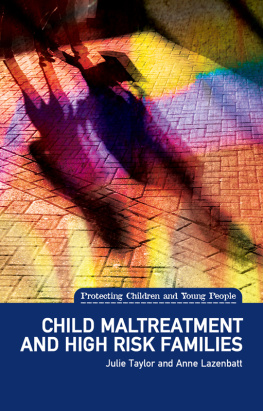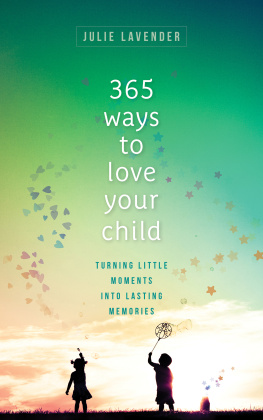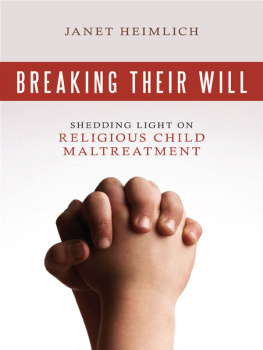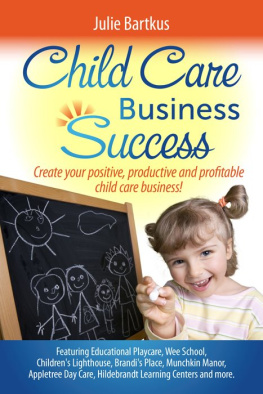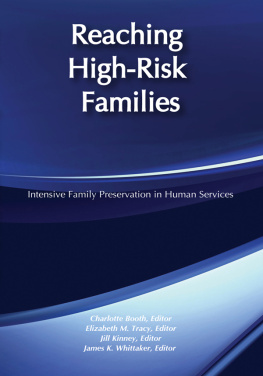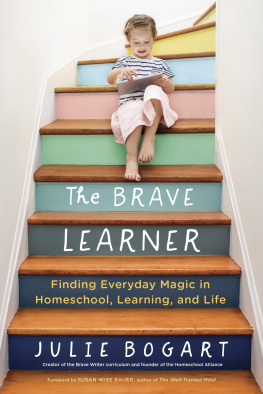PROTECTING CHILDREN AND YOUNG PEOPLE
SERIES EDITORS
JOHN DEVANEY
School of Sociology, Social Policy and Social Work, Queens University Belfast
and JULIE TAYLOR
University of Edinburgh, Child Protection Research Centre
and SHARON VINCENT
Centre for Health and Social Care Improvement, University of Wolverhampton
Child Maltreatment and High Risk Families
Julie Taylor
NSPCC Chair in Child Protection,
University of Edinburgh
Anne Lazenbatt
NSPCC Reader in Childhood Studies,
Queens University of Belfast
INTRODUCTION
Today child maltreatment is seen as a major and complex public health and social welfare problem, caused by a range of factors that involve the individual, the family and the community. Child abuse or neglect and general trauma, including the witnessing of domestic violence, are alarmingly common, and pose major threats and risks to child health and well-being (Scannapieco and Connell-Carrick, 2005). Such behaviour can alter normal child development and, without intervention, can have lifelong consequences (Flaherty et al., 2008) including death. Child abuse includes any type of maltreatment or harm inflicted on children and young people through interactions with adults (or older adolescents). These include, in decreasing level of frequency: neglect; physical abuse and non-accidental injury; emotional, psychological abuse or bullying; and sexual abuse (Radford et al., 2011). However, to define child abuse operationally is a complex task, as it involves an interpretation of what acts or behaviours towards a child are inappropriate and an estimation of the amount of harm suffered by a child. There are specific criminal laws which provide a clear benchmark of what is inappropriate behaviour, such as the rape of a child. But in other instances the civil law focuses on whether the child has suffered harm as a consequence of parental behaviour (or inaction in the case of neglect), and whether the harm is significant or not, such as when concerns exist about parental substance misuse or domestic violence. Clearly, it is always difficult to estimate the incidence and prevalence of a phenomenon such as child abuse. This is partly due to the difficulty in defining child abuse, but it is also related to the hidden nature of abuse and the varied forms in which it can present. Our understanding of the nature of child abuse comes from a range of sources, including statistics gathered by professionals in the course of their work, personal accounts provided by survivors of abuse and neglect, and research studies.
We know that sustained maltreatment can have major, long-term effects on all aspects of childrens health, as well as on their growth, intellectual development and mental well-being; moreover, it can impair their functioning as adults (Kendall-Tackett, 2002). Indeed, evidence tells us that all forms of child maltreatment should be considered important risks to overall health and a sizeable impact on the major contributors to the global burden of disease (Norman et al., 2012). Nevertheless, the public and many professionals remain unaware of these long-term health and mental health effects on infants and children (Gilbert et al., 2009). There has perhaps been some complacency in the professional and public eye over the last few years surrounding the topic of child abuse. Firstly, for most people it seems inconceivable that something we have known about for so long is still happening on such an unimaginable scale. That children should still be burnt and beaten, neglected or sexually abused on a daily basis does not seem congruent with modern society (Bonomi et al., 2008a; 2008b). Children may be at risk of experiencing harm from a range of people: for example, parents; siblings; extended family members; family friends; peers; adults in positions of trust; and strangers. Contrary to some media representations, children are at most risk from those who are known to them, rather than strangers. Whatever the relationship, there is a very small group of individuals who pose a significant risk to any child with whom they may have contact. Since this is the case, recent improvements in the criminal justice-led arrangements for monitoring and managing adults who pose a risk to children are essential in complementing the child-protection system. Secondly, we know that almost all child abuse occurs within families who are known to have one or more risk factors present, and that most child maltreatment occurs within a context of high risk families. This context of high risk is usually the accumulation of various risk factors, rather than the presence of any single one that affects outcomes. It is probably best understood by analysing the complex interactions between the numbers of risk factors that interconnect at different levels in an individuals life.
We now know that child abuse is far more common than suggested by official statistics of children assessed by child-protection services. Every year around one in ten children (about one million children in the UK) are maltreated, but official statistics indicate that less than one-tenth of this burden is investigated and substantiated. A UK population-based survey showed that 7% of individuals aged 1833 years had been subject to serious physical abuse at the hands of a parent or carer (Brooker et al., 2001). Physical abuse is a particularly significant problem in babies under the age of one year, since very young babies have the highest risk of suffering damage or death as a result of such abuse (Lazenbatt et al., 2012). The most comprehensive figures on the prevalence of child abuse in the UK were collected by the National Society for the Prevention of Cruelty to Children (NSPCC) in their 2009 study of child maltreatment (Radford et al., 2011). This study was undertaken with a random probability sample of parents, young people and young adults from across the UK, and the participants were interviewed about their experiences of child abuse and neglect. The sample consisted of: 2,160 parents or guardians of children aged less than eleven years; 2,275 young people aged 1117 years with additional information from their parents or guardians; and 1,761 young adults aged 1824 years. One in four of the young adults in this study reported having experienced severe maltreatment in childhood. (This was defined as severe physical and emotional abuse by any adult, severe neglect by parents or guardians and/or contact sexual abuse by any adult or peer.) Over the past six years in the UK there has been a substantial increase in the numbers of children assessed by professionals as being at risk of experiencing harm through abuse and neglect. Based on the evidence from prevalence research (Radford et al., 2011), this is more likely to reflect an increased awareness and identification of children at risk of experiencing harm rather than a rise in the numbers suffering abuse and neglect.


